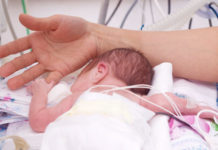A hair dye is a product that alters the colour of the hair either permanently or temporarily depending on the product. They include:
- Permanent – Do not wash out and leave a line as the hair grows;
- Semipermanent – last between 6-12 washings;
- Temporary – generally wash out after one wash and are therefore more likely to be applied by women rather than hairdressers.
There are several different types of hair dyes:
 Oxidative – in which a reaction between two or more chemicals is used to create the effect, typically found in permanent hair dyes.
Oxidative – in which a reaction between two or more chemicals is used to create the effect, typically found in permanent hair dyes.
- Direct dyes – penetrate the hair fibre without the need for other agents, typically found in semipermanent hair dyes.
- Metal salts – use a combination of a metal and salt, which may include lead.
- Natural dyes – use naturally occurring products.
Of these, oxidative dyes are the most common accounting for approximately 80% of hair dyes used in the United States and European countries.
Other hair treatments
Other hair treatments include:
- Hair bleaching
- Curling
- Chemical straightening or using ‘relaxers’
Hair bleaching involves bleaching the hair using the chemical hydrogen peroxide.
Curling is typically a two-step procedure. First a waving solution is applied to the hair and then a neutralisation or fixation solution is used.
Kindly written and reviewed by Dr Allison Johns BSc (Hons) MBBS, Doctor, King Edward Memorial Hospital and Editorial Advisory Board Member of Parenthub and Virtual Medical Centre.
References
More information on hair treatments and hair dyes during pregnancy
 |
For more information on hair dyes and hair treatments during your pregnancy see Hair treatments and hair dyes in pregnancy. |



 (4 votes, average: 4.00 out of 5)
(4 votes, average: 4.00 out of 5) 






